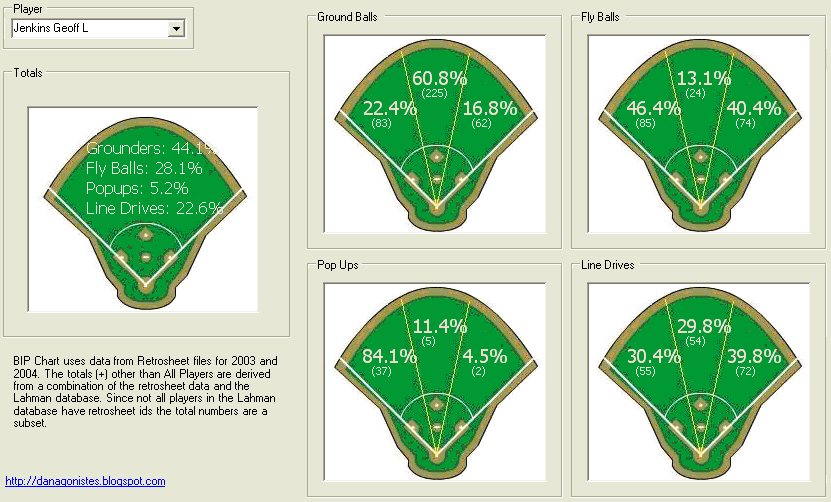"The Book" and Optimal Batting Order
What finally got me to order "The Book" was my curiousity over it's batting order chapter. There's been alot of talk about optimizing batting orders in saberland of late. The recent interest was ignited by some regression analysis done at "Beyond The Boxscore" that attempted to find the value of OBP and SLG by lineup position. Next thing you know, someone decides that it could be used to find optimal batting orders (and the runs created from ). A lineup generater was then written based on that assumption.
The problem is, that assumption is 100% incorrect, in my opinion. The analysis might give you insight on how to best utilize a traditional lineup (I'm skeptical of even that) but it certainly isn't going to tell you what a lineup "should" be. A much more sophisticated approach would be needed for that.
Fortunately, the The authors of "The Book" did just that. They use Markov Chains (sophisticated propabalistic mathmatics) to calculate the optimal batting order. According to a very short summary posted on Baseball Think Factory, here's what "The Book" says to do:
"Your three best hitters should bat somewhere in the 1, 2 and 4 slots. Your fourth and fifth best hitters should occupy the 3 and 5 slots. 1 and 2 guys should walk more often."
Let's comepare that to what managers did in 2005, as a group:
MLB, 2005
POS OBP SLG OPS
#1: 0.341 0.406 0.748
#2: 0.331 0.403 0.733
#3: 0.358 0.476 0.834
#4: 0.355 0.485 0.839
#5: 0.339 0.455 0.794
#6: 0.330 0.436 0.766
#7: 0.316 0.392 0.709
#8: 0.316 0.387 0.702
#9: 0.316 0.387 0.702
I always thought that teams putting a relatively weak hitter at #2 were making a mistake. It will be interesting to read "The Book" to find out how much that inefficiency (along with the rest) costs a team in terms of runs.



